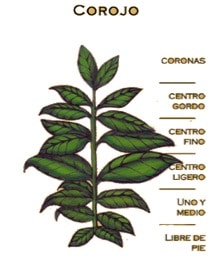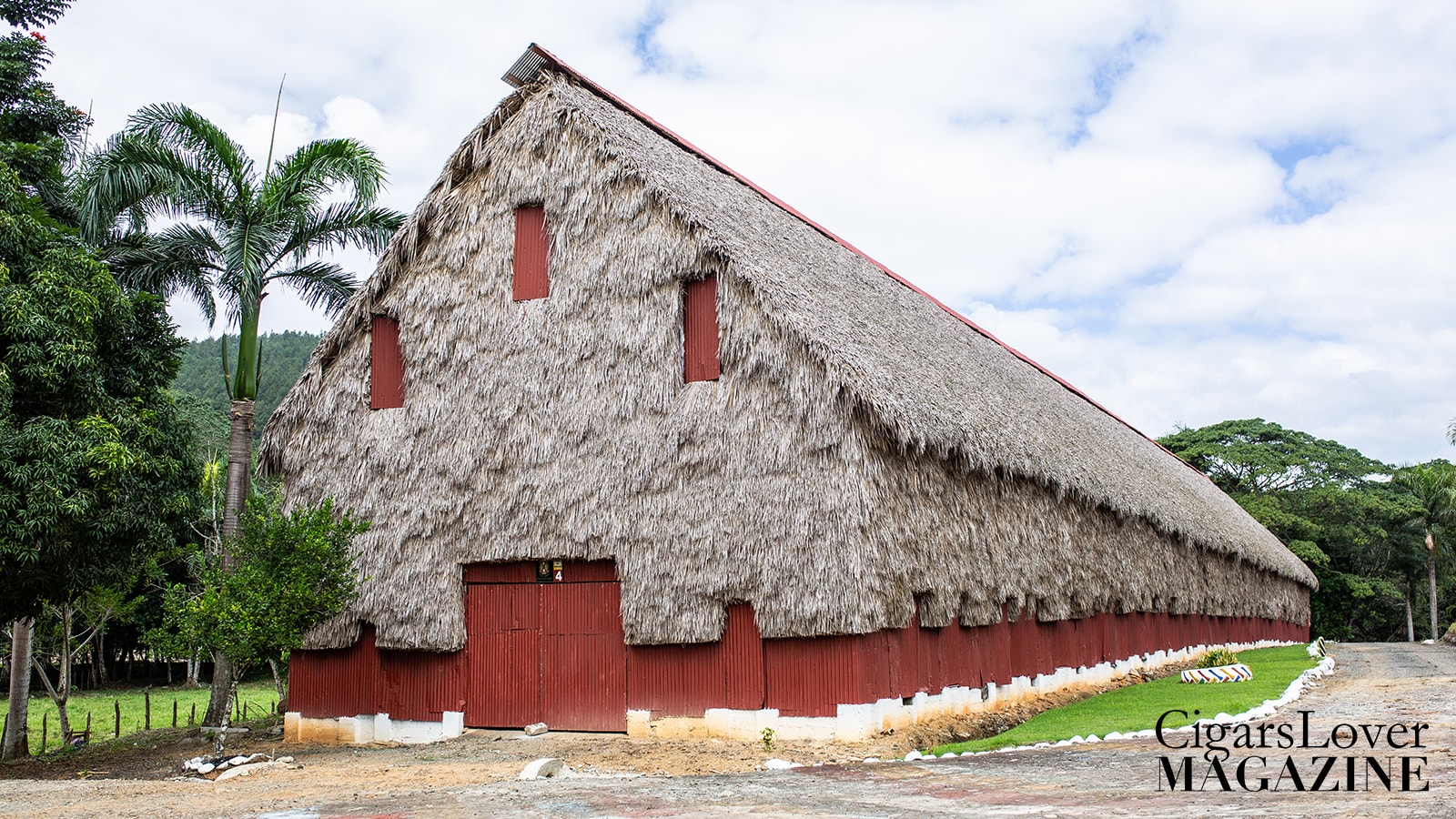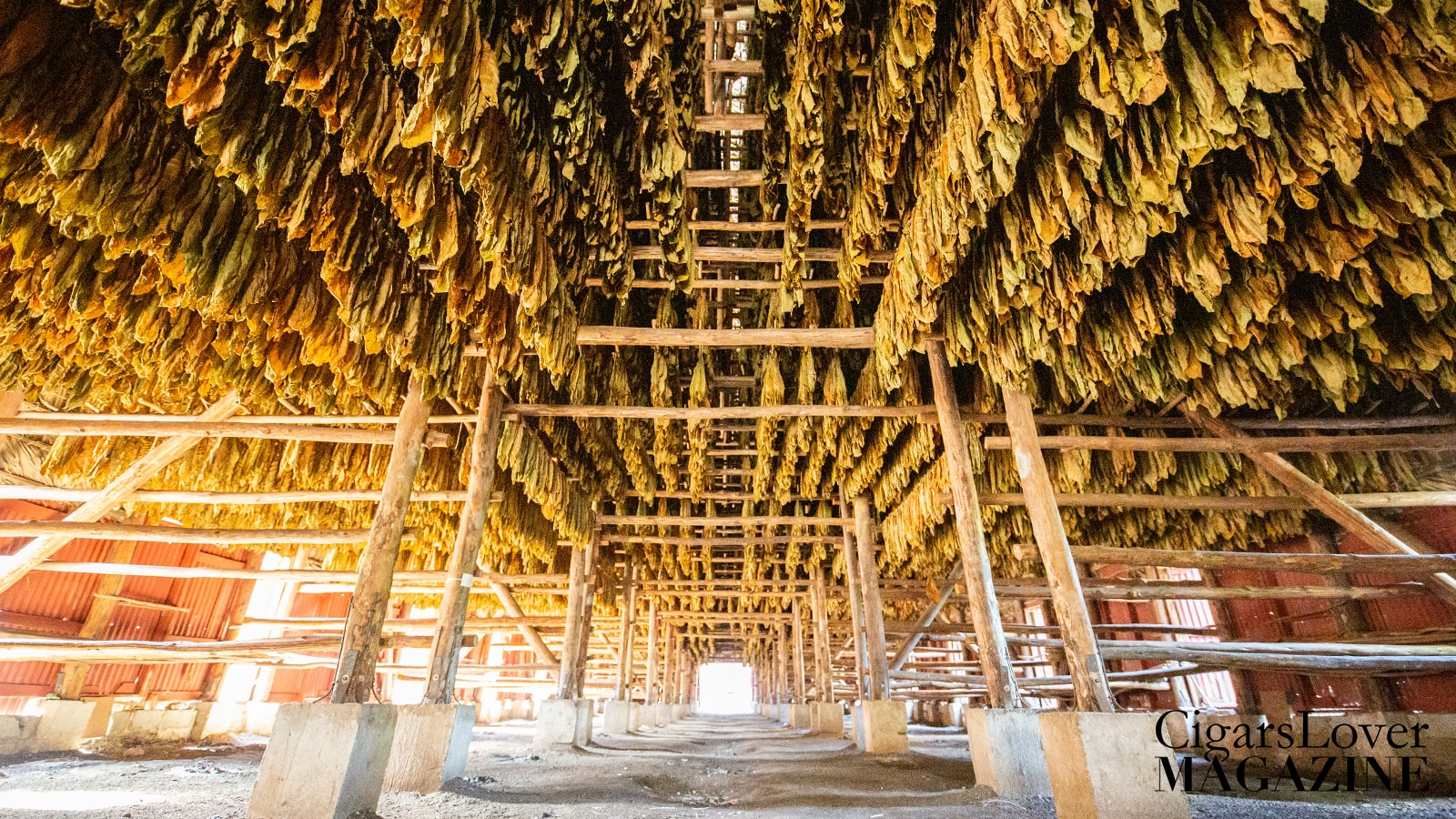The cycle of harvesting the leaves of the tobacco plant lasts approximately 40 days and begins at least 50 days after grafting the seedlings into the fields. Like all crops, even that of tobacco, it is a very labor intense work: each leaf is detached by hand from the plants and no more than three leaves can be detached simultaneously.

Each tobacco plant in the Corojo family has 16 to 18 leaves, split over various levels. Today the original Corojo is grown only in Honduras and Kentucky, while its hybrids are much more widespread, obtained from the cross-pollination of plants with seeds of new tobaccos, capable of giving the plant strong disease resistant characteristics. Once it reaches maturity, the harvesting takes place level by level. 7 days may elapse between the collection of one level to another.
 |
 |
The levels of the Corojo, from which the leaves for the wrapper are obtained, ordered from the bottom up, are Libre de Pie, Uno y Medio, Centro Ligero, Centro Fino, Centro Gordo and Coronas.
Plants of the Criollo variety have 12 to 14 leaves, which are divided into Ligero, Seco and Volado. The Volado leaves, located at the foot of the plant, offer a softer flavor since they are the oldest and most shaded ones; their task is to allow proper combustion. The more you go up to the top of the plant the more the leaves will be exposed to the sun, this translates into greater strength. The Seco is the intermediate level, it is a flavorful leaf, then we reach the Ligero, characterized by strength.

It is the “casa del tabaco” where the leaves, that were just picked from the fields, are placed in. Here the leaves are divided according to their origin, location on the plant, and their destination (where it ends up in the cigar). Once the sorting is finished, the leaves are hung on poles and on several levels. Then the leaves are left to dry.

The “casa de tabacos” are oriented with the short sides to the east and west so that the sun can heat the front and back of the building only at sunrise and sunset. Inside, temperature and humidity are controlled so that their numbers remain constant. This operation was scrupulously carried out by opening and closing the doors of the “casas”; today it is easier to find special machinery. The loss of humidity, called drying, lasts from 25 to 30 days for the leaves destined for the wrapper, from 50 to 60 days for binder and filler.

The poles with the freshly picked leaves are placed closer to the ground in the “casas” and moved higher as the leaves dry out. Initially the leaves will take on a yellowish color and, later, thanks to the oxidation and loss of chlorophyll, they will take on a golden reddish color; at this point the residual humidity inside the leaves will be less than 10% and they will be ready for the fermentation phase.

The poles with the leaves from the Corojo plants are lowered. This operation is carried out in the morning, when it is cooler, in order to avoid that the leaves are particularly dry and contact with the hands causes them to break.
Once removed and selected, the leaves of each pole are grouped in gavillas (bundles) and transported to the casas di fermentacion. Here the gavillas are placed in piles (Pilon in Spanish), for aerobic fermentation (in the presence of oxygen).


